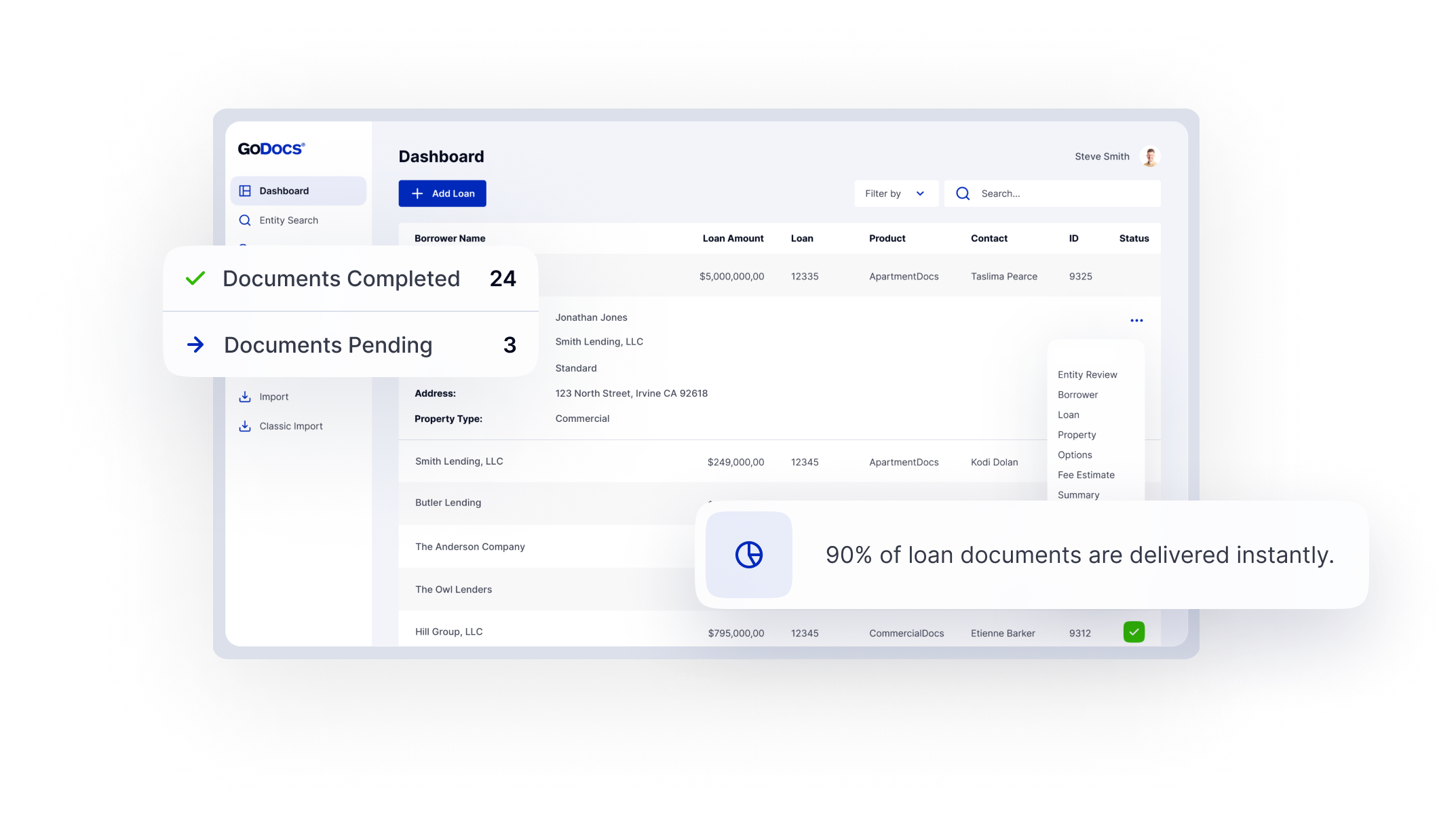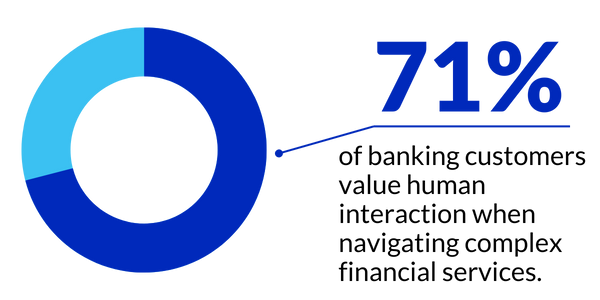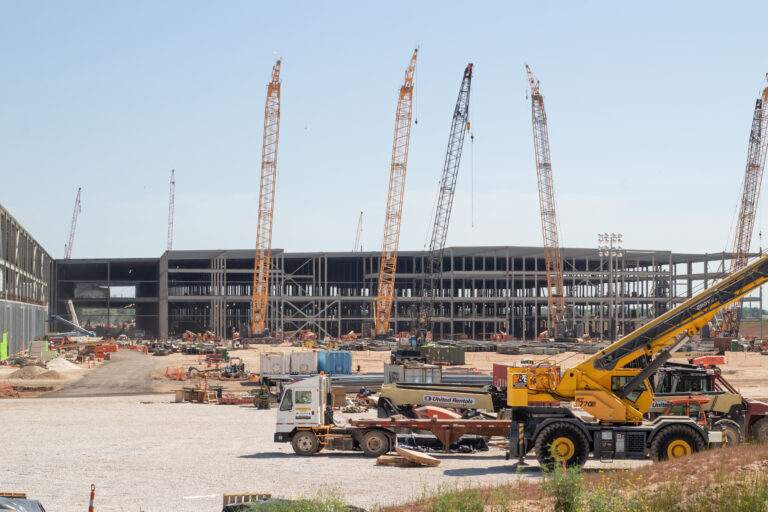After two years of cautious optimism, commercial real estate (CRE) lending is officially back on the move. According to the latest CBRE Lending Momentum Index, total CRE investment volume hit $112 billion in Q3 2025, up 13% year-over-year. Lending activity in 2025 doubled from last year, up 112% YoY, reaching its highest level since 2018.
Despite the threat of recession, the demand for CRE loans seems to be on a rebound. So why are we seeing this turnaround now? And how can financial institutions ensure they are well positioned to take advantage of this trend?
A Convergence of Confidence, Necessity, and Demand
There’s rarely a single reason behind a shift this significant. Instead, the relative surge in commercial real estate lending over the past 12 months reflects the intersection of several forces, each reinforcing the other to restore confidence and accelerate investment in the market.
After two years of caution, recent and anticipated decreases in interest rates have stabilized the lending market, giving investors and lenders room to return to the CRE market. The Federal Reserve’s back-to-back rate cuts in September (to 4.0–4.25%) and October (to 3.75–4.0%) created increased demand for commercial loans, and this demand is expected to continue into 2026 as forecasters expect an additional rate cut in December. With borrowing costs easing and uncertainty fading, new deals that had been sitting on the sidelines are now being reactivated.
At the same time, a wave of loan maturities is reshaping balance sheets across banks and credit unions. As we noted in our post on loan modifications in 2025, more than $500 billion in commercial loans have been reaching maturity throughout 2025. These loan maturations create a natural surge in renewals, refinancings, extensions, and originations. For lenders, that means renewed opportunities to reprice, restructure, and grow portfolios.
And in a still-uncertain general economy, real estate continues to represent one of the few relatively stable investments. As we explored in “When Others Shelter, It’s Your Time to Lead”, disciplined expansion into CRE assets allows lenders to capture durable, hard asset-backed income even when broader markets waver.
Multifamily: The Cornerstone of CRE’s Comeback?
Add this good interest rate news to the increased demand for multifamily housing, and the picture becomes even clearer. It’s no surprise, then, that multifamily remains the top investment category, with Q3 volume up 10% YoY to $42 billion. We’re also seeing a new wave of adaptive-reuse projects in urban areas, with vacant office buildings being converted into affordable housing stock. These conversions, encouraged by state incentives to help solve the dual problems of affordable housing and urban revitalization, represent both a social opportunity and a financial one: turning underused urban real estate into thriving multifamily communities that strengthen local economies.

In short, the national housing shortage, coupled with new state incentives for office-to-multifamily conversions, which started in larger cities like Boston and New York and is now extending into midsize cities such as Seattle, Minneapolis and Chicago, is fueling investment into this sector at an unprecedented rate. Multifamily lending isn’t just a byproduct of this momentum, it’s one of the primary engines driving it.
Who’s Leading the Lending Charge?
According to the CBRE report, private debt funds are now the single largest group of non-agency lenders, capturing 37% of Q3 closings (up from 34% last year). But the biggest comeback story belongs to banks, whose share of CBRE’s loan originations jumped from 18% to 31%, a stunning 167% YoY increase. After sitting on the sidelines, it looks like regulated lenders are returning to CRE as a core growth engine, particularly through multifamily and small-business loans.
Meanwhile, life companies, once dominant players, have retreated sharply. These organizations now represent 16% of non-agency volume, down from 43%. Their slowdown is likely caused by a number of factors including an outdated and costly approach to loan generation. Many are still paying law firms to produce documents that modern automation can handle faster and better. A shift to a more automated approach is likely to boost insurance company lenders back into a significant role as a CRE lender.
What This Means for Lenders in 2026
The lending landscape entering 2026 is rich with opportunity, but it will reward agility, not playing it safe.
- Expect continued strength in multifamily and small-business lending. SBA reforms and new rule changes are creating fertile ground for community banks and credit unions to expand their impact.
- Modernize to meet market speed. As deal volume surges, lenders can’t afford to get bogged down by manual or outdated underwriting and document generation processes. Now more than ever, using a solution that is just “fine” isn’t good enough.
- Automate to scale responsibly. Institutions that leverage a sophisticated, 50-state compliant document automation system can close faster, reduce legal risk, and capture more share in this accelerating market.
To help your team get ahead of this next lending cycle, download our free resource:
A Practical Map to Modernizing Secure, Stable Commercial Lending Processes
And for actionable strategies on balancing speed and stability in CRE lending, explore: 6 Commercial Lending Plays for Banks and Credit Unions That Deliver Long-Term Stability
Final Takeaway
The CRE market is seeing renewed growth, and lenders who modernize operations, embrace automation, and approach lending with disciplined confidence will be best positioned not just to keep pace, but to lead the market’s next chapter.
Head of Business Strategies & Partnerships









